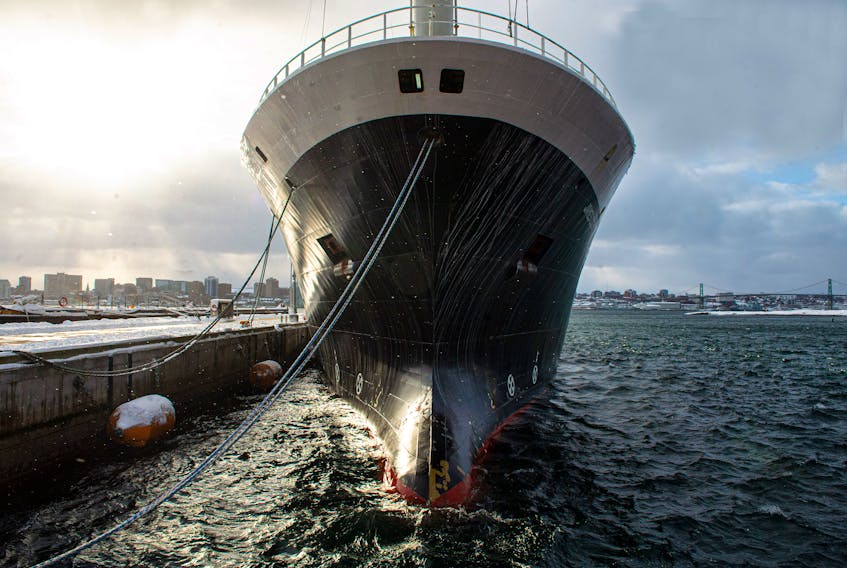In the pantheon of celebrity visits to HRM, where does Boaty McBoatface rate?
The autonomous underwater vehicle, made famous as a result of asking Internet users for a name, is just one of the scientific resources aboard the British Royal Research Ship James Cook, which was berthed at the Centre for Ocean Ventures and Entrepreneurship (COVE) on the Dartmouth waterfront.
The Chronicle Herald toured the massive research vessel on Thursday, one day before it was due to set sail for another round of scientific adventures.
The ship has been in port since just before Christmas after serving as the host vessel for Department of Fisheries and Oceans researchers and other Canadian scientists for an expedition off Newfoundland that recently concluded.
Capt. James Gwinnell, who conducted the tour, said the vessel Cook has the capacity to carry 54 people, 22 of whom are crew with the rest of the spots reserved for scientists and technicians.

A variety of winches, cranes and frames, ranging in size from about half of a hatchback car to dwarfing a city bus, are set up on the deck to facilitate the launch and management of various underwater vehicles, equipment and sensors.
Inside, there is the main working hangar, where Boaty McBoatface is secured in a cradle. The robotic vessel, looking like a bright yellow torpedo that has bulked up in the gym, can be deployed on data-gathering missions ranging from 24 to 72 hours. The name, by the way, was originally suggested to apply to its state-of-the-art polar research mother ship, but that vessel was eventually dubbed the RRS Sir David Attenborough.
Gwinnell said they also can launch and recover autonomous underwater gliders that can be deployed for months at a time.
Through a nearby bulkhead door, a large lab space awaits, with workbenches set up with plywood installed on top so scientists can screw down any equipment they want without damaging the work surfaces. Two doors at one end are large enough to accommodate shipping containers. A little farther down the hall, another full lab is set up with monitor screens at the ready and the capability to seal off sections to provide encapsulated environments and gear ready to pipe any gases or supplies a researcher could need, Another lab is set up for water sampling and yet another can offer a controlled temperature environment.
"The key with this ship is flexibility," Gwinnell said. "We're doing a different scientific trip every time, so we'll exchange scientists or have different groups of scientists on board - chemists, physicists, biologists - all doing their own work. So we have to be able to work with any kind of science that is required."
One of the six decks on the vessel is communal living space, with a lounge, a bar, library and video resources, and a large galley and mess room for meals.

The bridge, which is manned 24-hours a day when at sea, is set up with a manual control station as well as a fully automated dynamic positioning system designed to hold the ship precisely on station during science projects. The 360-degree view from the windows on every wall is spectacular.
The RRS James Cook was built in 2006. It's 89.2 metres long and has a beam of 18.6 metres. It's maximum draft is 6.315 metres. Gwinnell joked that you can tell it was fitted out in Norway because it has a sauna on board.
It leaves Friday for Fort Lauderdale to pick up another group of scientists for their next trip. Gwinnell said they will be going to the Canary Islands, doing water sampling every 24 kilometres.
Jim Hanlon, CEO of COVE, lauded the opportunity the ship brought for local students and stakeholders to see what a top research vessel can offer. The vessel hosted tours throughout it's time in port.
"It is one of the latest, best research vessels in the world," Hanlon said. "It has state-of-the-art capability in terms of deepwater oceanography, so from our point of view, it's a visit by one of the world's best research vessels, which we're always happy to see at COVE. It's the kind of thing that we like to do because it allows the companies here and our other stakeholders to see those kinds of assets and see where we may be able to work together."









